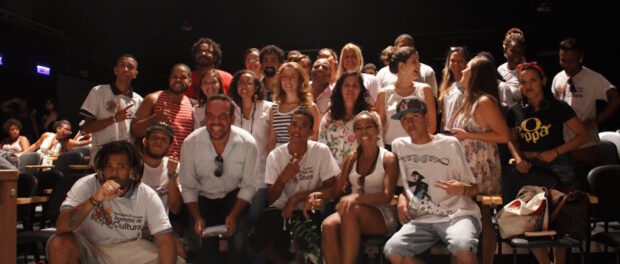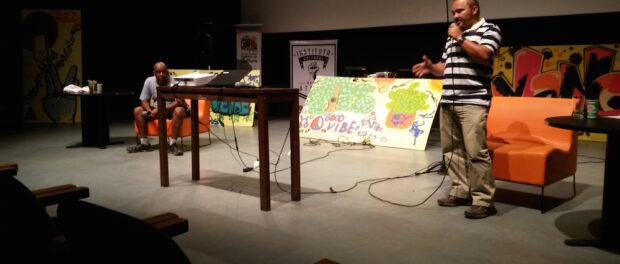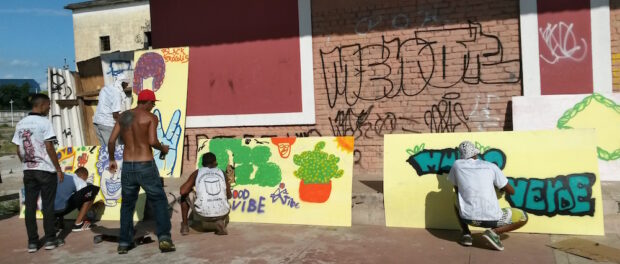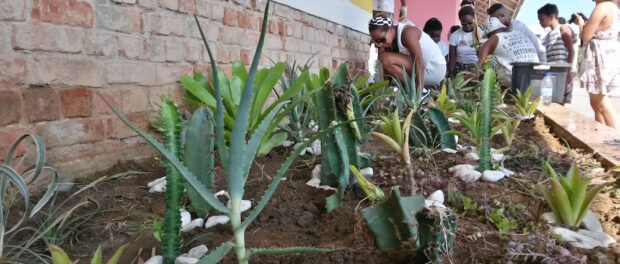
On Wednesday March 4 community leaders, environmental activists and young people all from the North Zone community of Manguinhos gathered at the community library to launch the project Plantando Ideias (Planting Ideas). The initiative is a joint collaboration between Teto Verde Favela (Green Roof Favela) and Favela Criativa (Creative Favela). Throughout the afternoon, residents of Manguinhos put on a series of events, from gardening to graffiti to a rap concert, all aimed at raising environmental awareness within the community.
The goal behind the Planting Ideas project is simple: to make favelas greener. The idea, developed by 20 year old community resident Eduardo Costa, is that by involving the community members in ecological projects and building an environmental discourse, residents can improve their own attitudes toward the environment.
The screening of the documentary Teto Verde Favela explained the ambitions of the organization: to encourage community residents to have more plants, and in particular, plants on rooftops. Antônio Soares, a biologist who works closely with Teto Verde Favela, explained that they are “implementing the idea of sustainability in communities through the green roof, with a green covering not only to ease the temperature in the houses but also to make it more beautiful, to give a natural beauty to the area.”
The concept developed by Careca Artes, community activist and founder of the initiative, is that the plants on the rooftops absorb heat, acting as a natural cooling system for the house. Moreover, by using rainwater and household compost, the project is completely sustainable.
To complement the Teto Verde Favela project there was a poetry recital, short story reading, rap concert and graffiti exhibition, all emphasizing one theme: environmental awareness. The cultural component was organized by young Manguinhos residents who are part of the Favela Criativa initiative.
Since September of last year, a combination of state and private sector funding has produced R$14 million to invest across 20 pacified favelas in projects that will “contribute to the cultural, social and economic development of the favelas” through Favela Criativa. Through the program, around 400 students are provided with the help and funding they need to produce an artistic project, receive qualifications and learn about community activism. Guilherme Folly, a teacher for Favela Criativa in Manguinhos and Turano, said that while the students work on “artistic cultural projects, it is also about service to the community.”
Both Teto Verde Favela and Favela Criativa emphasize the need for community residents to take initiative and improve their communities through grassroots activism. The event was opened by Careca Artes with a very simple but effective example of how this can be done. He organized the planting of a new cactus bed around the community sports center in order to re-habilitate and transform an arid and dirty space into a public garden that can be enjoyed by everyone from the community.
Antônio Soares highlighted the importance of these events as demonstrations “to the rest of the society that inside the favelas there are people who think.” According to him, these events show the other similar communities and the residents of their own neighborhood that they have the capacity to produce change, to be self-sustainable, and as Careca put it, “to have a better standard of life.”



